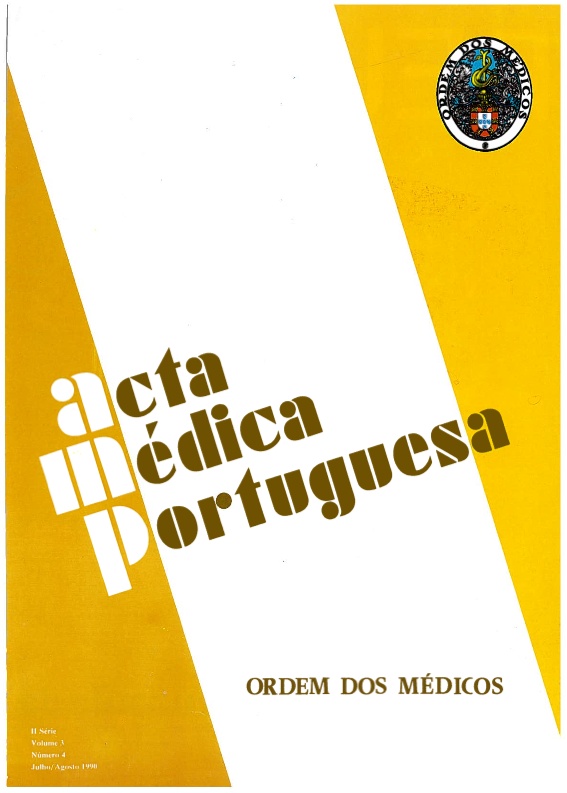Ombros dolorosos. Avaliação clínico-ecográfica.
DOI:
https://doi.org/10.20344/amp.4569Resumo
Painful shoulders are a frequent pathology and its specific diagnosis and therapeutic control are common challenges to medical professionals. To solve these problems a non invasive morphologic method of study--Real Time Ultrasonography--is presented. A standardized routine ultrasonographic technique using static and dynamic imaging was applied to the analysis of fifty patients whose clinical data suggested soft tissue pathology of that joint. Initial sonographic diagnostic data were compared with clinical signs and x-ray information and in some cases arthrographic and surgical observation as well. The utility of sonography in the therapeutic control was specially evaluated in a sub-group of twenty patients with clinical and ultrasonographic evidence of tendinitis or bursitis at that location and submitted to physiatric treatment. Sonographic criteria established in terms of echogenicity, dimensions and dynamic scanning performance are described and its value as diagnostic and therapeutic control tools are discussed. Our results suggest that real time ultrasonography is a useful method to confirm the diagnosis and could be indispensable to follow and control the therapeutic results in Painful Shoulders.Downloads
Downloads
Como Citar
Edição
Secção
Licença
Todos os artigos publicados na AMP são de acesso aberto e cumprem os requisitos das agências de financiamento ou instituições académicas. Relativamente à utilização por terceiros a AMP rege-se pelos termos da licença Creative Commons ‘Atribuição – Uso Não-Comercial – (CC-BY-NC)’.
É da responsabilidade do autor obter permissão para reproduzir figuras, tabelas, etc., de outras publicações. Após a aceitação de um artigo, os autores serão convidados a preencher uma “Declaração de Responsabilidade Autoral e Partilha de Direitos de Autor “(http://www.actamedicaportuguesa.com/info/AMP-NormasPublicacao.pdf) e a “Declaração de Potenciais Conflitos de Interesse” (http://www.icmje.org/conflicts-of-interest) do ICMJE. Será enviado um e-mail ao autor correspondente, confirmando a receção do manuscrito.
Após a publicação, os autores ficam autorizados a disponibilizar os seus artigos em repositórios das suas instituições de origem, desde que mencionem sempre onde foram publicados e de acordo com a licença Creative Commons









